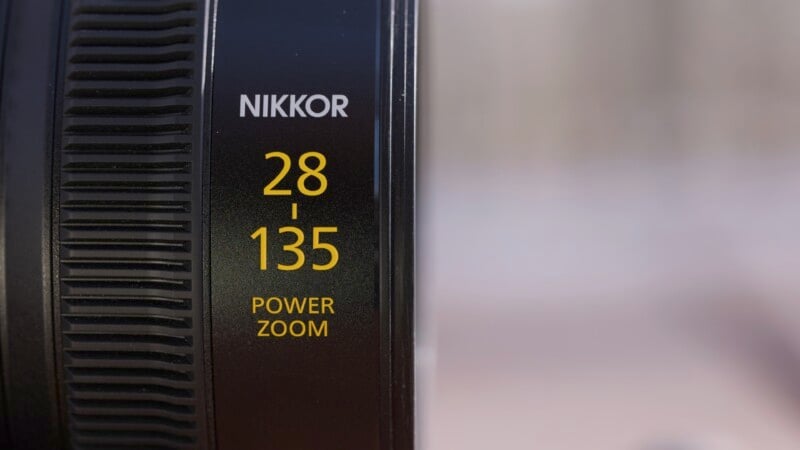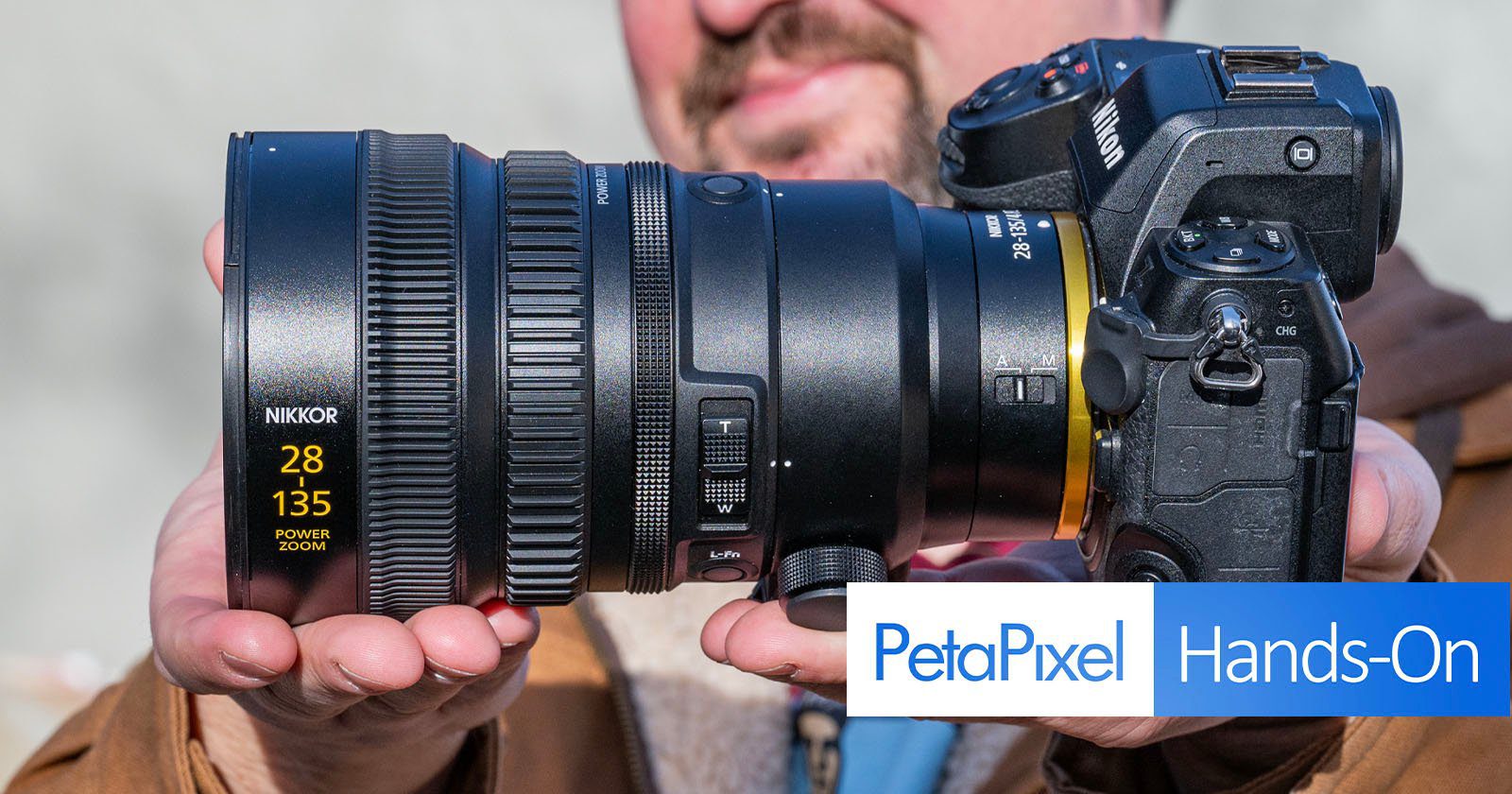
If someone had suggested a few years back that Nikon would unveil a lens specifically designed for video with a power zoom feature, I would have been skeptical. However, following the launch of the Z9, it’s evident that Nikon aims to win over the videography and cinematography communities. This strategy became even clearer after Nikon’s acquisition of RED about a year ago. Now, we have Nikon’s inaugural Z-Mount lens aimed at video producers, the Nikkor Z 28-135mm f/4 PZ.

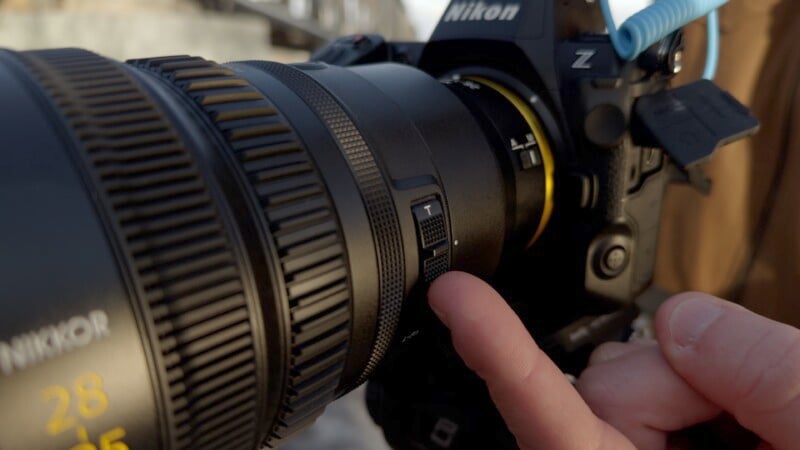
During our testing with a pre-production version of the lens, we weren’t able to conduct controlled tests for image quality, but I utilized this lens while filming our entire Nikon Z 35mm f/1.2 S episode, giving me hands-on experience to draw upon. For additional insights into the image quality this lens produces, you can view the episode on YouTube.
Nikkor 28-135mm f/4 PZ Z: The Ultimate Power Zoom
The design of the 28-135mm distinctly resembles a conventional video lens with its prominent square hood, geared focus ring, and power zoom rocker clearly indicating its target users. I found it a bit disappointing that there isn’t a mechanical focus clutch for precise focus pulls, but the focus ring is well damped and exceptionally responsive. Make sure to adjust the manual focus response to “linear” in your camera settings for optimal control.
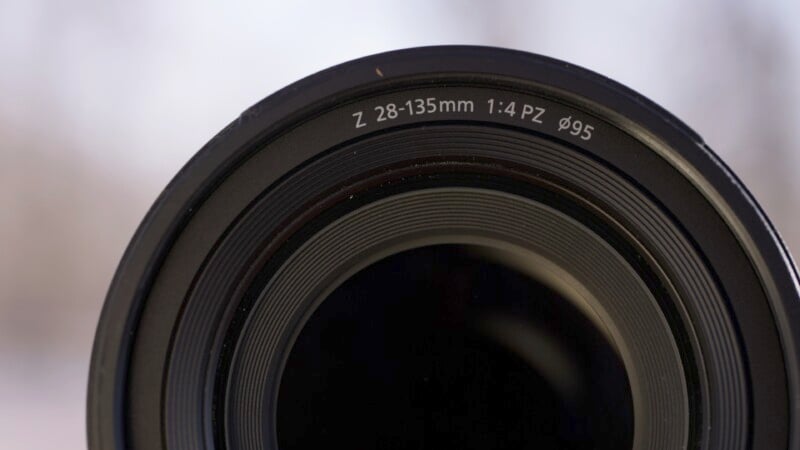
The power zoom can be operated in multiple ways. The most common method is via the power zoom rocker, which I found somewhat sensitive and wished it had more resistance to prevent unexpected changes in zoom speed. Instead, I preferred dedicating a couple of custom buttons on the camera body—particularly the front custom buttons near the lens mount—for a smoother, continuous zoom experience. For rapid zooming and achieving dramatic “crash-zoom” effects, the zoom ring is the best option. It’s highly responsive with negligible lag, a significant improvement over the older Sony 28-135mm f/4 PZ for E-Mount. Additionally, zoom adjustments can also be made using Nikon’s mobile or desktop applications and the MC-N10 video grip.
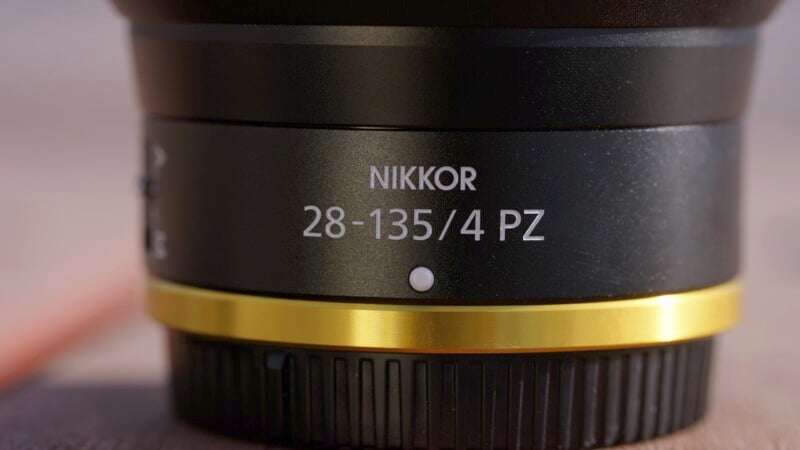
Custom buttons, a control dial (which I prefer to set to aperture for my fellow cinematographers), and a manual/autofocus switch are also included. The lens is weather-sealed against dust and moisture; however, the large 95mm filter thread could pose challenges for finding compatible screw-on filters, making a matte-box with drop-in filters a useful recommendation for users.
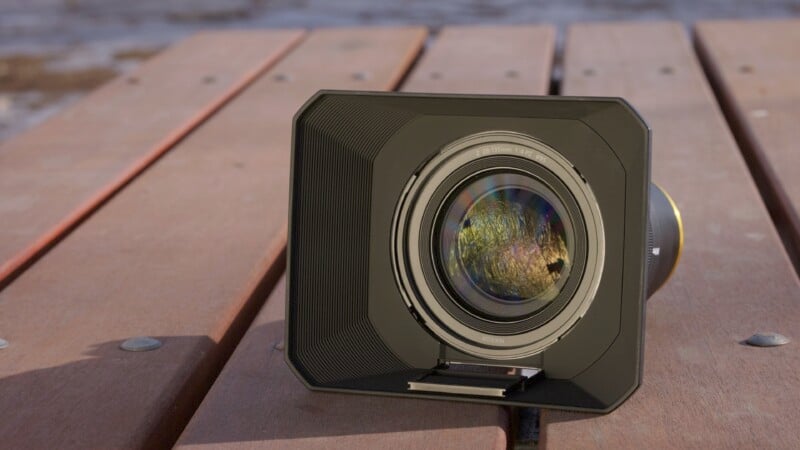
Nikkor 28-135mm f/4 PZ Z: A Visual Masterpiece
The bokeh produced by this lens is exceptionally pleasing. While there might be a slight soap bubble effect with brighter highlights, most out-of-focus details transition smoothly into a soft blur. I found tight shots featuring our host to be visually stunning, especially with a shallow depth of field, a refreshing contrast to many previously experienced power zoom lenses that often had distracting background elements.
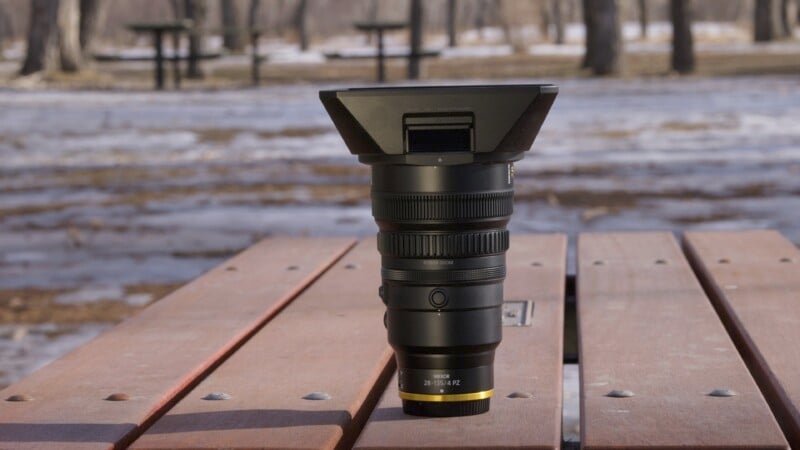
Video shooters are often concerned about focus breathing—the change in field of view during focus shifts. This lens performs admirably, exhibiting very little breathing at 28mm and nearly none at 135mm, making it an impressive performer considering its expansive zoom range.
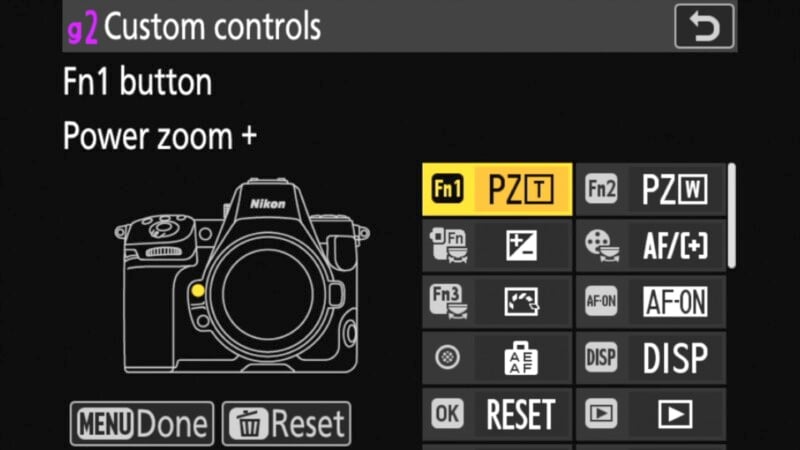
The close-up capabilities of this lens are typical for its category—neither impressive nor inadequate. At 28mm, it achieves 0.15x magnification at 34 cm (13.4 inches) from the sensor plane, while the 135mm end provides a more useful 0.25x magnification at 57 cm (22.4 inches). This performance will suffice for many product and nature photography needs, though a dedicated macro lens will be essential for capturing intricate details.

Nikkor 28-135mm f/4 PZ Z: A Long-Awaited Addition
I genuinely appreciated my experience with the Nikon Z 28-135mm f/4 PZ and am eager to use it for future projects once it launches in the Spring. Although the $2,600 price tag might be high for casual users, it aligns well with competitors such as the Sony 28-135mm f/4 PZ, priced at $3,100. The power zoom feature fills a significant gap in Nikon’s lens offerings, making it an enticing option for videographers and cinematographers to explore Nikon’s Z-Mount collection.
